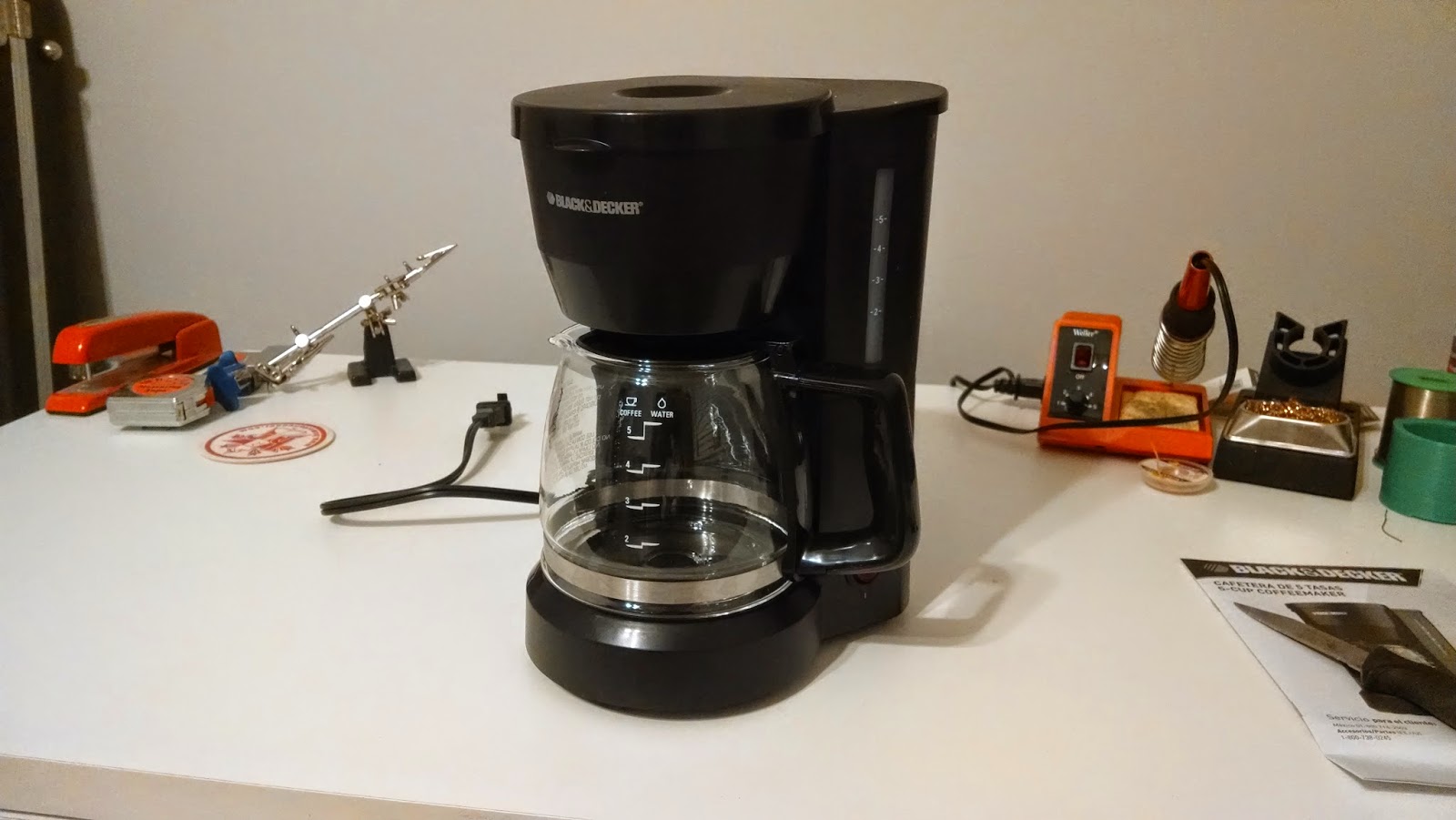I had never really considered how a coffee maker functioned before. The general process of getting the water hot, and then dumping it on the grounds is obvious, but how does the machine make it happen? How does it move the water from the reservoir to the basket with the grounds? How does it know when the water is hot enough? How does it do these things with components that come together and sell for profit at a shelf price of $10?
These are not questions that typically occur to me, especially at the time of day and state of mind that leads me to seek caffeine. They occurred to me as I was opening up my coffee pot, but even then... not really in any depth. I figured the switch would heat the reservoir and then it would have some sort of temp sensor and a comparator, and once a level was reached the water would be dumped into the basket with the grounds.
That method would work... but probably not for a product with a sale price of $10. It also would not work for a product where the reservoir and the grounds basket exist side by side, a fact that somehow escaped me. I'm an electrical engineer, dammit! I think in circuits, not... with my eyes???
Anyway, before we get to how this thing functions, I have someone for you to meet:
If this screw had his way, I would not be typing this right now. Instead, I would be googling methods of fashioning custom screw drivers out of melted plastic, and other atrocities.
Thankfully, the plastic on the bottom of the coffee pot is so bendy, I could just release the latches on the back, and fold it away.
So... There is basically nothing in here. This should not have surprised me. I mean this coffee pot was purchased for $10.
The external switch connects the high side of the AC wall voltage to a heating element. There are two resistors in series with the heating element that I am guessing regulate the current through the element, which is probably cheaper than manufacturing what would basically amount to a horseshoe shape ceramic resistor.
I saw and took a sniff of the white stuff on the edges of the heating element. It's thermal paste! the heating element is not welded to the plate the pot sits on, it is pressed onto by the cross beam seen above. Kind of interesting?
Finally, for completion sake, we have a shot into the reservoir:
I drew a model to help visualize the system:
So the switch is turned on after the reservoir and grounds are loaded (or before, but why would you do that?). The water conduit in the bottom, and the plate that heats the pot are joined to the heating element by compression and thermal paste. As the water heats up it climbs the conduit until escaping into the basket, where it soaks the grounds, and coffee happens.
Next time I will compare the findings of my deconstruction to my design objectives from the previous post and discuss solutions. See you then!






No comments:
Post a Comment